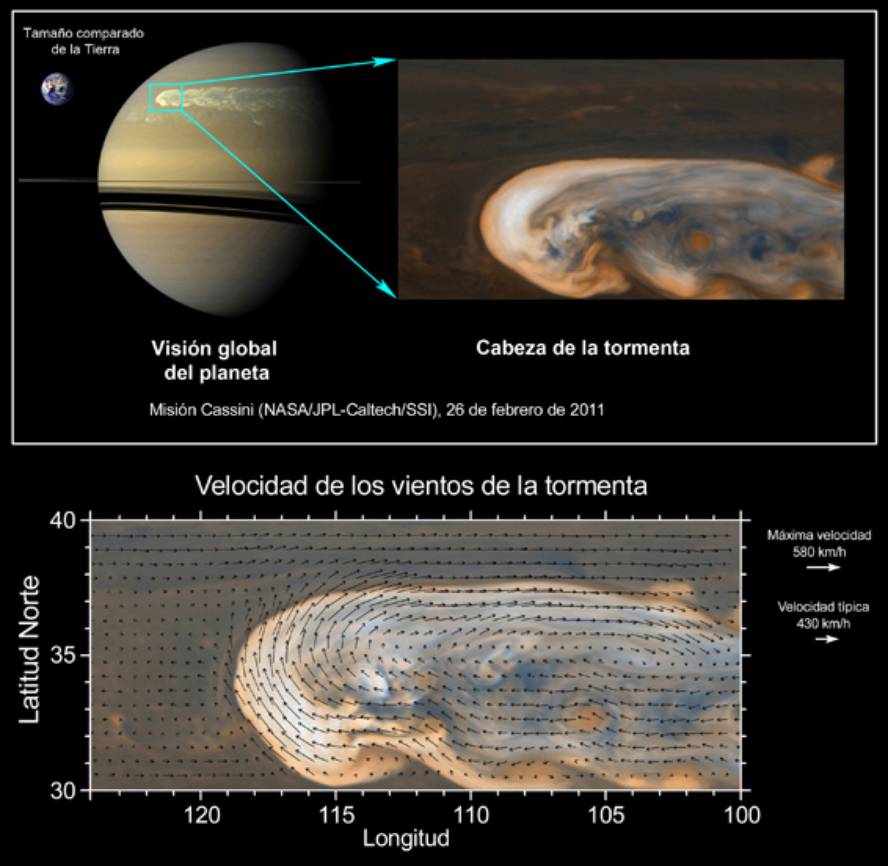Giant Storm of Saturn, stronger than expected

The immense storm Great White Spot of Saturn, in 2010, not only reached the billions of kilometers of extension, but caused stronger winds than expected. In fact, the UPV Group of Planetary Sciences has published in the journal Nature Geoscience a work that explains the dynamics of the storm.
Each year approximately Saturn, 30 years terrestrial, produces a giant storm. Due to its appearance in the atmosphere of the planet are called great white spots. The last was the Great White Spot 2010 and the Cassini spacecraft was able to get high-definition images. The starting point of the storm was a small white cloud, bright in the middle latitudes of the northern hemisphere, which grew rapidly and remained active for more than seven months. During this time a mix of white clouds emerged that expanded to form a turbulent cloud ring that occupied billions of square kilometers. The Planetary Science Group presented two years ago the first study of the storm and now, in this new work, they have analysed in detail the "head" or "focus" of the storm.
Analyzing the images taken by the Cassini probe, the storm's head winds have been measured. In this region, the storm and surrounding atmosphere interact and form very strong continuous winds at 500 km/h. "We did not expect such a violent traffic in the region in which the storm develops, a symptom of a particularly violent interaction between the storm and the atmosphere of the planet," explains the research director, Enrique García (Fundació Observatori Esteve Duran – Institut de Ciències de l’Espai, CSIC).
In addition, researchers have created mathematical models of the storm. It is calculated that the focus of the storm is deep, 300 km above the visible clouds, and that the storm transported huge amounts of water vapor to the high layers of the aquatic atmosphere. Visible clouds were formed and large amounts of energy were released, an injection of energy that interacted with the dominant winds of Saturn, resulting in a wind of 500 km/h. Likewise, the study has shown that, despite the enormous activity of the storm, it was not able to substantially change the regime of the dominant winds of the planet, but there was a strong interaction.




